Hardwood in effluent schemes
Ian Nicholas, Angus Gordon, Stephen Pearce and Marie Heaphy, New Zealand Tree Grower November 2010.
The treatment of waste water is of increasing value to land managers, local councils and small communities in New Zealand. Trees have been used for waste water treatment at various sites by individual farmers and district council utility managers.
The use of fast growing hardwoods provides an excellent opportunity for carbon sequestration and bioenergy production in addition to the removal of nutrients in effluent land treatment systems. The New Zealand Land Treatment Collective obtained support from MAF’s Sustainable Farming Fund for this project to review hardwoods in effluent schemes.
Almost any type of waste water
A total of 13 sites were investigated from Omaha, north of Auckland, to Invercargill. These covered a wide variety of sites and a range of effluent type from domestic waste water to sawdust leachate. The most common application method was spraying, although four systems used drip irrigation.
At 11 of the sites, data was collected from the establishment of growth plots which were measured for growth and yield. Two of the sites were not suitable for growth plot establishment and so no data was collected from them. At the Whakarewarewa site, high mortality resulted in too little data for individual plot summaries.
Best results
The highest productivity was achieved with Eucalyptus nitens at the Invercargill site. This was followed by the two Waihi Beach plots of E. maidenii with the closest spacing providing the higher volume. The Whiritoa site provided the fourth ranked volume, only just superior to Whitianga with E. globulus, and the mixed plots from the Omaha plantation which has combinations of E. saligna, E. botryoides, and Acacia melanoxylon. The A. melanoxylon at Puhoi and E. ovata at Blenheim showed very similar productivity. However, the coppice material at Blenheim would increase the site productivity from this species.
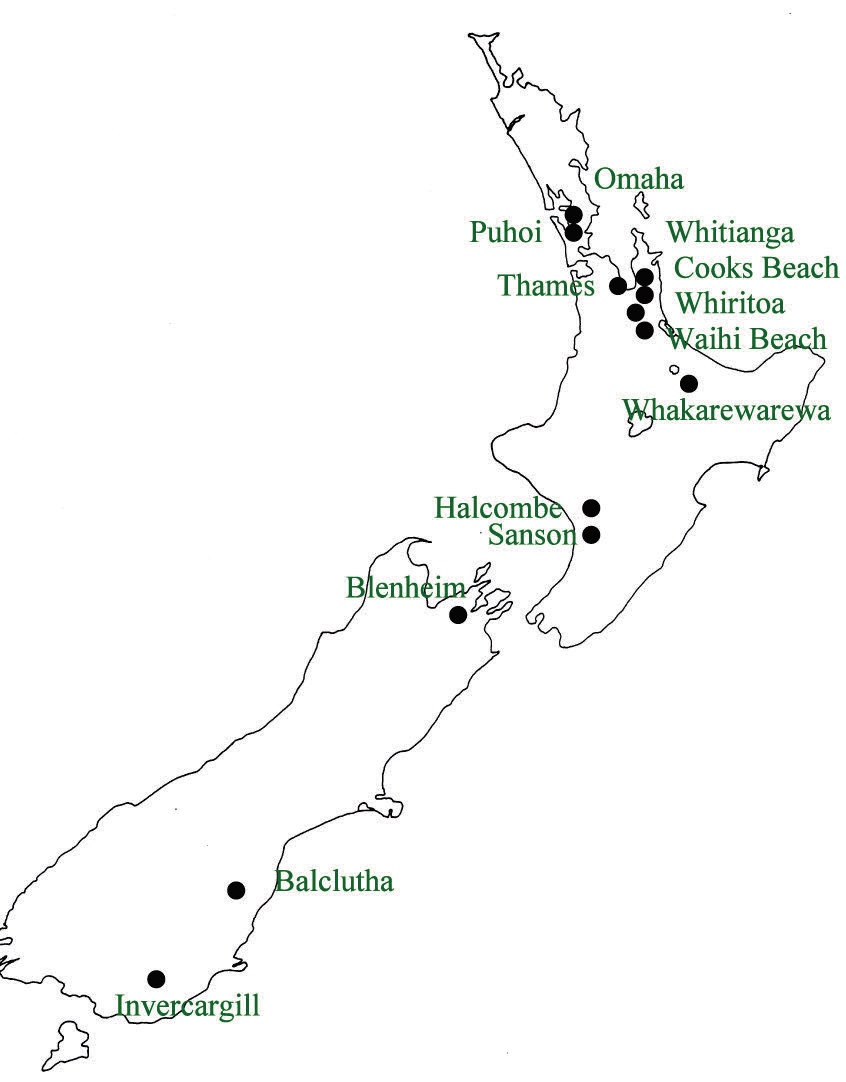
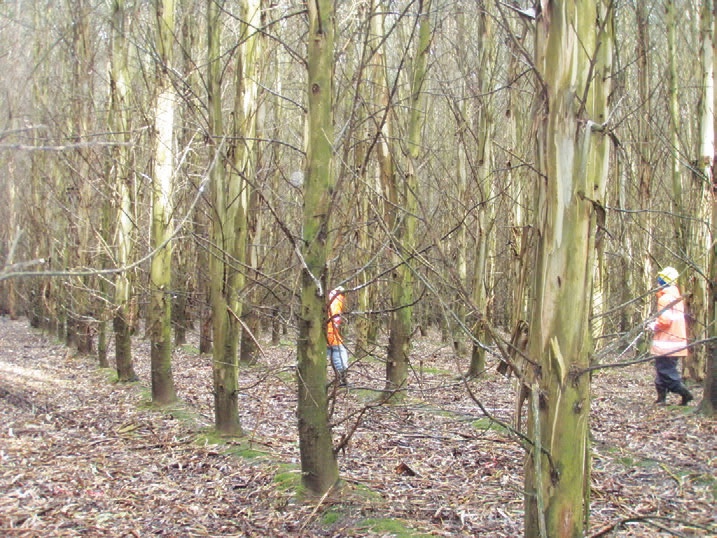
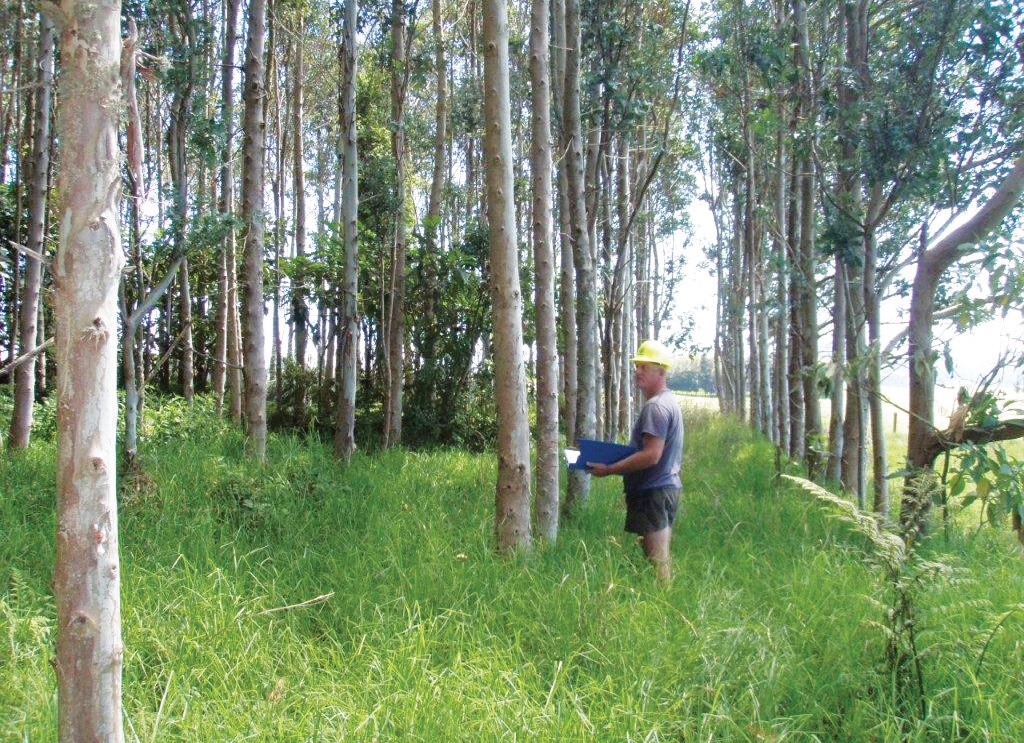
What the results mean
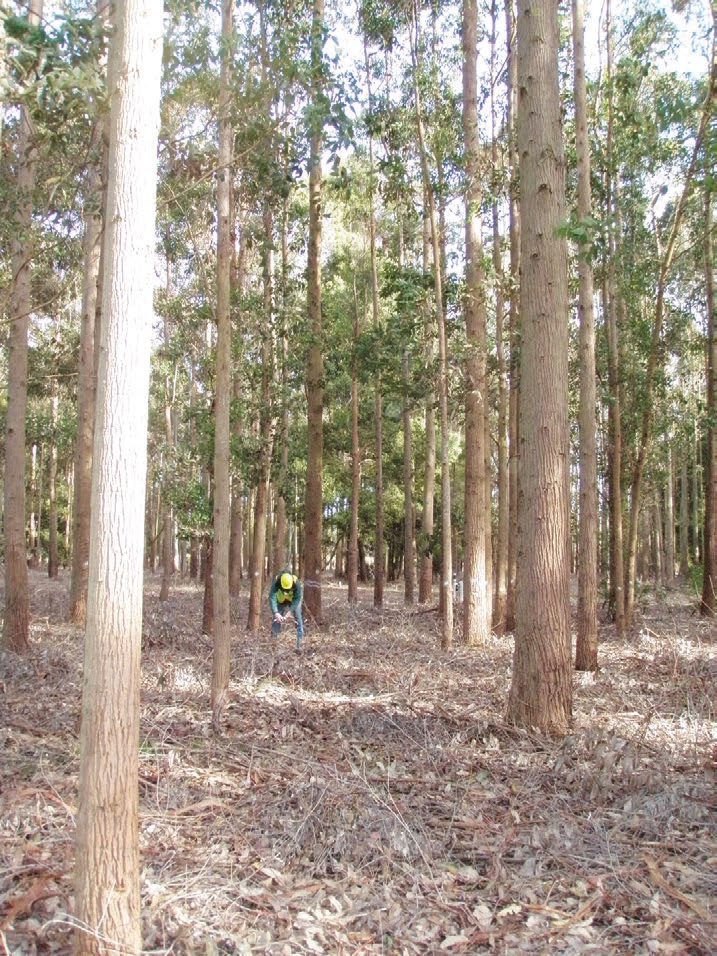
Care is required in the interpretation of these productivity figures in several respects. Firstly the three top sites are no longer getting effluent. More importantly the interaction of eucalypt species and site is critical to the long term performance of systems involving eucalypts.
For example, while E. globulus plots have quite high productivity, the E. maidenii was the best performing of the three eucalypt species planted at Cooks Beach site. Here it was superior to E. globulus and E. ovata. The E. ovata, which was established in wetter areas with A. melanoxylon, has performed very poorly, but the A. melanoxylon is growing very well.
Eucalypt advantage
The review of schemes has shown that the hardwoods, mostly eucalypts, are growing well on a range of sites. The advantage of eucalypts in effluent schemes is they can accumulate considerable biomass in a short period of time.
Of the 13 sites evaluated the best example of a successful effluent scheme, with crop removal to remove nutrients off site, was the Whiritoa plantation. This is running very well with periodic removal of stem wood for firewood. It is the only scheme that is being managed according to the objectives where the coppicing ability of select eucalypts is used to remove nutrients from the system. The Blenheim site is also achieving the same effect in a sporadic manner rather than in a managed system.
Plantation growth data from sites assessed
| Location | Species | Age in years | Stocking in stems per hectare | Mean diameter in cm | Mean height in metres | Volume in cubic metres per hectare | Volume MAI in cubic metres per hectare per year |
|---|---|---|---|---|---|---|---|
| Invercargill | E. nitens | 12 | 1450 | 23.0 | 24.9 | 544.1 | 43.5 |
| Waihi Beach | E. maidenii | 9 | 2497 | 13.8 | 15.1 | 227.8 | 25.3 |
| Waihi Beach | E. maidenii | 9 | 1012 | 19.2 | 15.2 | 174.7 | 19.4 |
| Whiritoa | E. botryoides (coppice) | 3 | 3350 | 7.4 | 7.9 | 52.6 | 17.5 |
| Whitianga | E. globulus | 11 | 2659 | 12.4 | 14.7 | 190.5 | 17.3 |
| Omaha | Mixed species | 21 | 788 | 42.1 | 39.5 | 343.7 | 16.3 |
| Puhoi | A. melanoxylon | 13 | 963 | 20.9 | 13.1 | 184.1 | 14.0 |
| Blenheim | E. ovata | 12 | 792 | 18.7 | 16.0 | 166.4 | 13.9 |
| Omaha | E. botryoides | 21 | 582 | 23.8 | 24.1 | 271.0 | 12.8 |
| Omaha | E. saligna | 21 | 450 | 25.8 | 25.8 | 214.3 | 10.1 |
| Sanson | E. globulus | 10 | 1575 | 12.9 | 11.3 | 69.2 | 9.7 |
| Cooks Beach | A. melanoxylon | 10 | 875 | 17.1 | 10.0 | 84.2 | 8.5 |
| Cooks Beach | E. globulus | 10 | 1184 | 11.3 | 12.1 | 60.5 | 6.1 |
| Halcombe | E. ovata | 10 | 2525 | 10.5 | 9.8 | 53.0 | 5.4 |
| Sanson | E. camaldulensis | 10 | 1725 | 12.3 | 6.9 | 41.0 | 4.2 |
| Cooks Beach | E. maidenii | 10 | 467 | 14.0 | 12.9 | 38.9 | 3.9 |
| Cooks Beach | E. ovata | 10 | 463 | 11.2 | 8.9 | 15.3 | 1.5 |
| Omaha | A. melanoxylon | 21 | 200 | 18.1 | 12.5 | 40.4 | 1.9 |
| Cooks Beach | E. ovata | 10 | 463 | 11.2 | 8.9 | 15.3 | 1.5 |
| Blenheim | E. ovata (coppice) | ? | 350 | 7.5 |
The performance of E. ovata was extremely variable. In some previous effluent trials it had performed very well. It was performing well at Blenheim, but was very poor at Cooks Beach where A. melanoxylon had superior growth and health. At Halcombe growth was adequate but not very impressive. Other than E. nitens near Invercargill and E. botryoides at Whiritoa, other species that performed well were E. maidenii and A. melanoxylon.
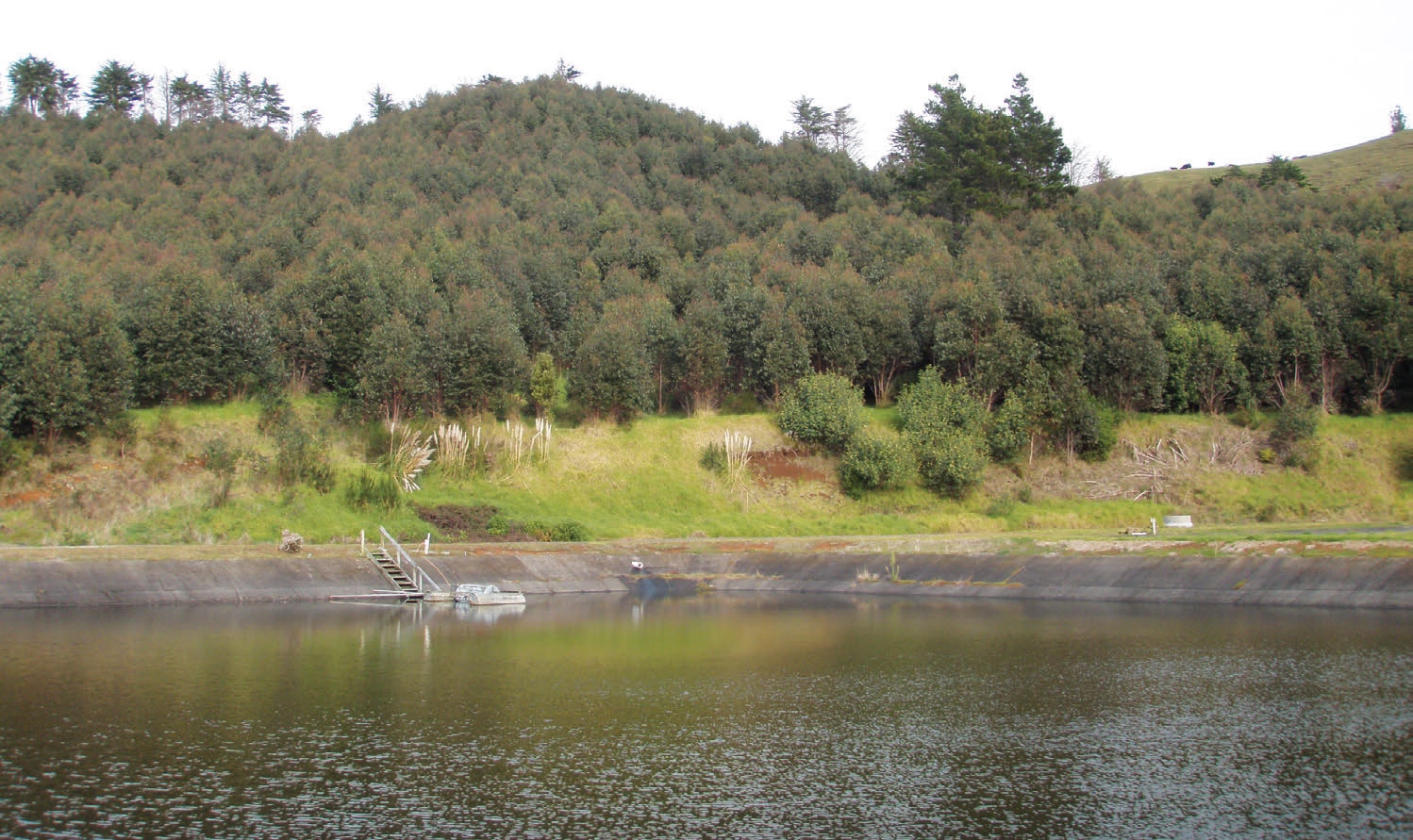
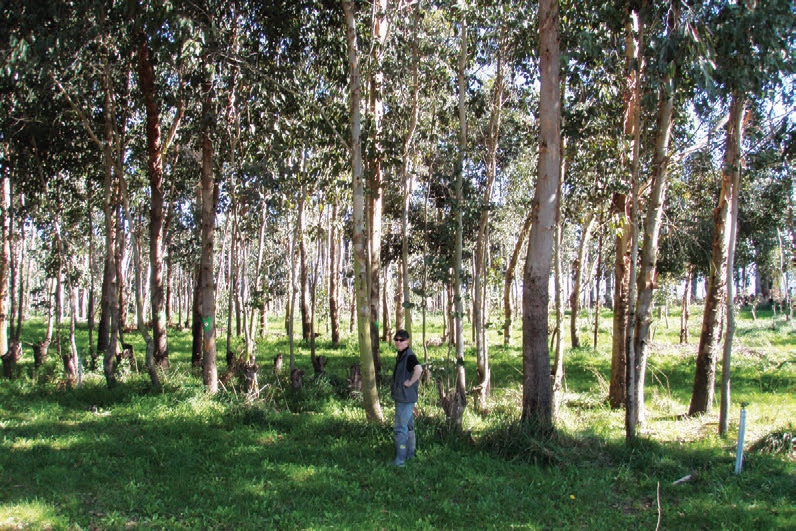
While this review has focussed on hardwoods, it was very interesting to note that adjacent radiata pine plantings looked healthy and productive at several sites. There is considerable experience with pine in effluent systems. If the attributes of fast early growth, high nutrient uptake, and coppicing characteristics of hardwoods are not being used, then pine should also be considered for land treatment schemes.
Conclusion
The eucalypt plantations which were evaluated varied in performance. Some were highly productive with an MAI of 43.5 cubic metres per hectare per year, whereas others showed poor growth with only 1.5 cubic metres per hectare per year. Very few of the are being managed for nutrient removal. It appears that most are being used simply as land application sites without making use of the hardwood species for nutrient removal.
The most productive species were E. nitens in Southland, E. botryoides at Whiritoa, E. maidenii and A. melanoxylon at Waihi Beach and Cooks Beach. The selection of species for effluent schemes should take location and management system into account. The potential for bioenergy plantations as a management system to remove nutrients is still an option. However, it is not one that has been recognised in most of the locations evaluated.
The best example of a site which is managing nutrient inputs and removing material for bioenergy is the one at Whiritoa. Two crops have been removed since 1989, with most of the material used for firewood. Two sites, Halcombe and Sanson have potential to be used for firewood because of their favourable topography.
The support from the MAF Sustainable Farming Fund and the Land Treatment Collective for this project are most appreciated, along with significant support from other organisations.

 Farm Forestry New Zealand
Farm Forestry New Zealand

